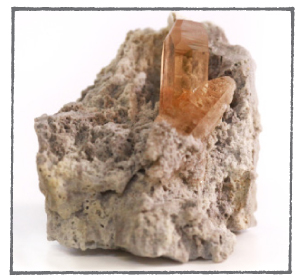TOPAZ

TOPAZ IS A MEMBER OF THE SILICATES GROUP with well-formed crystals and is found in a variety of colors, sometimes in colossal formations that are measured in pounds. There are two predominant beliefs about the derivation of the name topaz: one is that it comes from the Sanskrit word tapaz meaning “fire”; the other is that it is named for the ancient island of Topazios (now known as St. John’s Island) in the Red Sea, where the stone was thought to have been found originally. However, this second origin is in dispute because we now think that the island was actually rich in olivine (see peridot) deposits, not topaz. It must be noted, however, that the gem was often misidentified in its early applications; a seventeenth-century crown once thought to hold one of the largest diamonds ever mined is now believed to have held a colorless topaz.
While topaz is found in a variety of colors, the most popular in both the gem trade and gem healing are blue topaz, yellow (or golden) topaz, and pink topaz. Pink is rare, and most examples you see set into jewelry today are heat-treated yellow Brazilian topaz. Likewise, colorless topaz, the most abundant variety, is often irradiated to create the most desirable blues. Used as a talisman throughout the ages, common uses for the stone were to ward off the evil eye, to cure eye troubles, to fight depression and insomnia, to revitalize taste, and even to cure the plague (by a Roman physician in the fifteenth century). Topaz is the modern and ayurvedic birthstone for November and is associated with the zodiac sign Sagittarius.